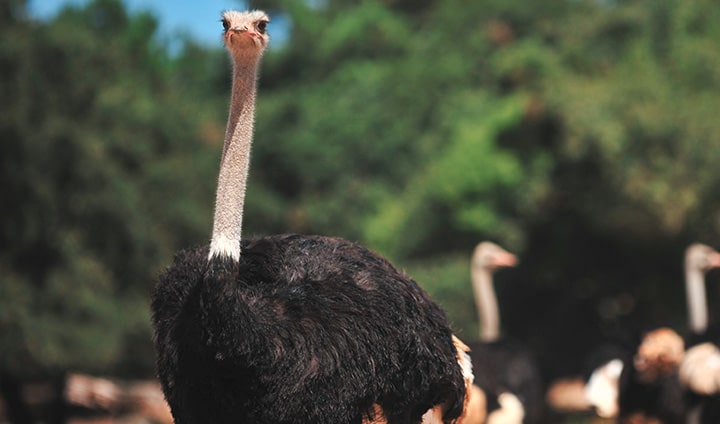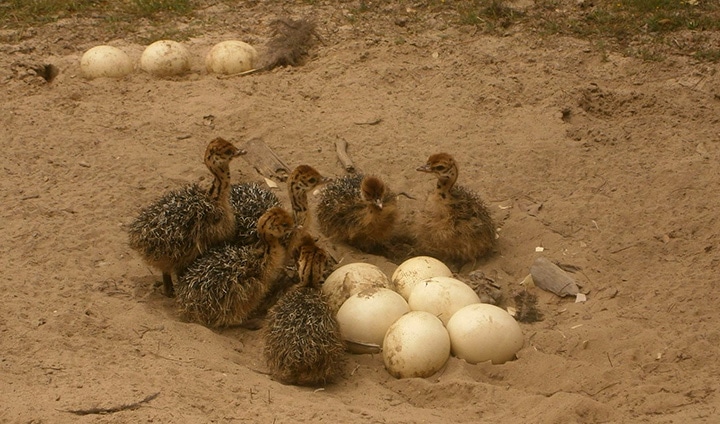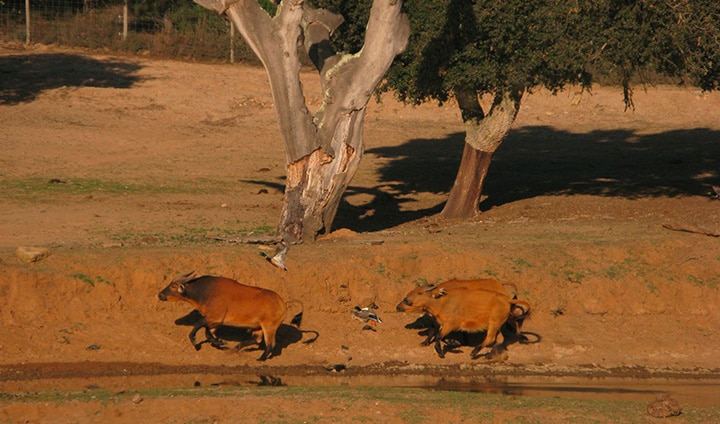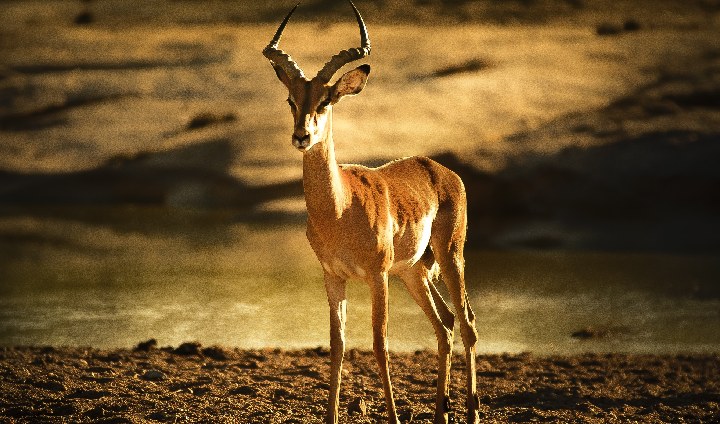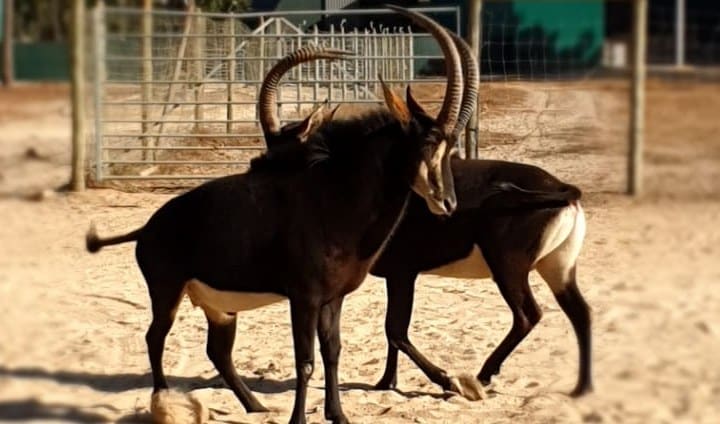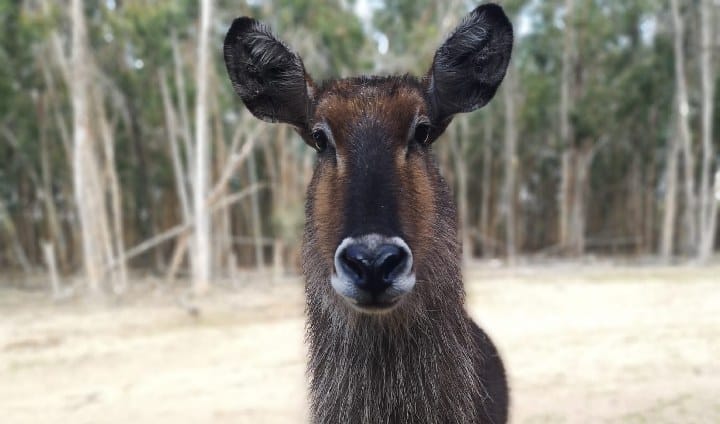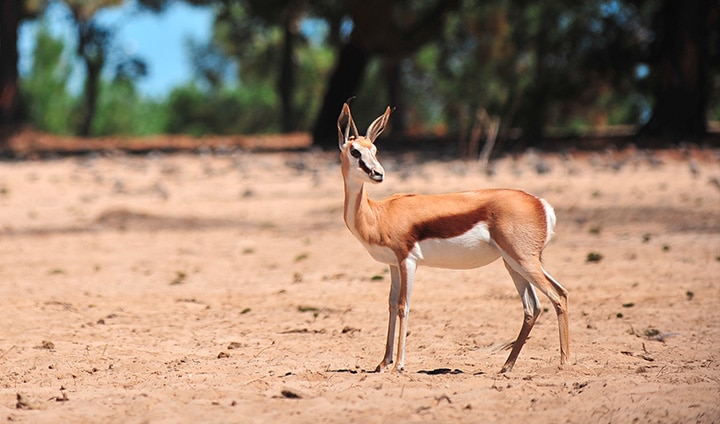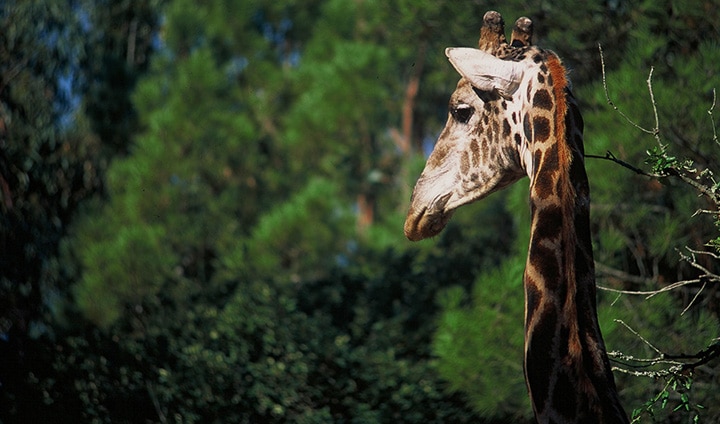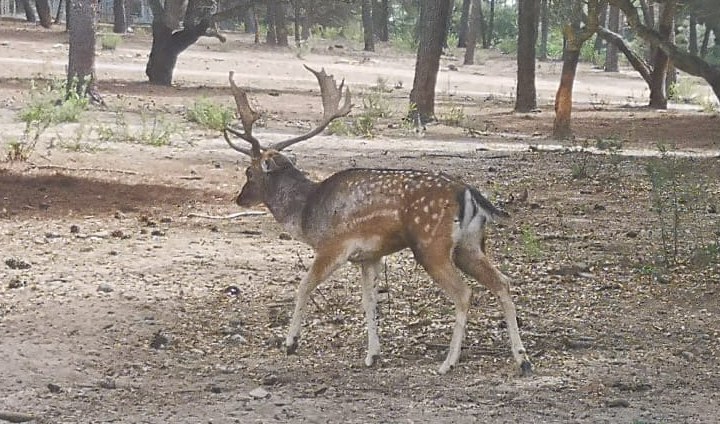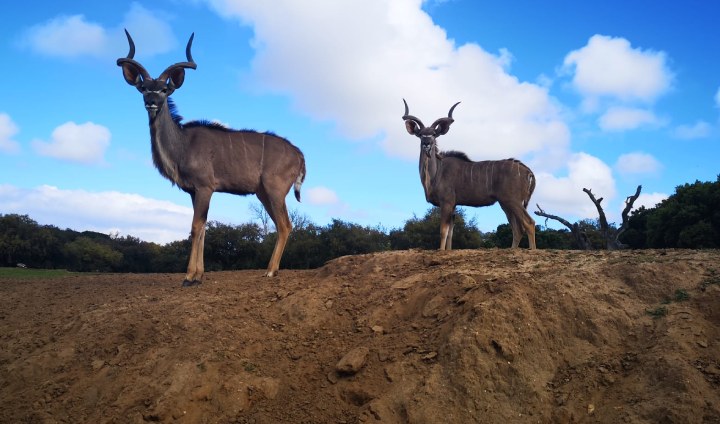Distribution and Habitat: They are distributed throughout the sub-Saharan region, preferring savannah and pasture areas.
Diet: Ostriches are herbivorous animals, mainly feeding on vegetable matter, but they can occasionally ingest animal matter, from carcasses left by predators. They are highly selective animals and can eat about four kilos of food per day. Ostriches can survive without drinking water for long periods.
Reproduction: Males with defined territories fight for groups of females. Males have to conquer females by performing a mating dance, where the female decides. The nests, small holes in the sand, can hold between 15 and 60 eggs. Eggs have an incubation time of 40 days, where incubation is the responsibility of both parents.
Behaviour: Ostriches live in flocks of up to 50 individuals and usually join groups of zebras. When they find water, which is sometimes rare, ostriches are very fond of bathing to take care of their feathers. When threatened, ostriches lie on the ground, with their neck stretched. In the reproductive season, both parents take care of the nest, the darker-coloured male by night, and the lighter-coloured female by day.
Conservation Status: Least Concern (LC)
Class: Aves
Order: Struthioniformes
Family: Struthionidae
Dimensions: up to 2,5 m height
Weight: 90 kg – 130 kg
Lifespan: 40 – 50 years


